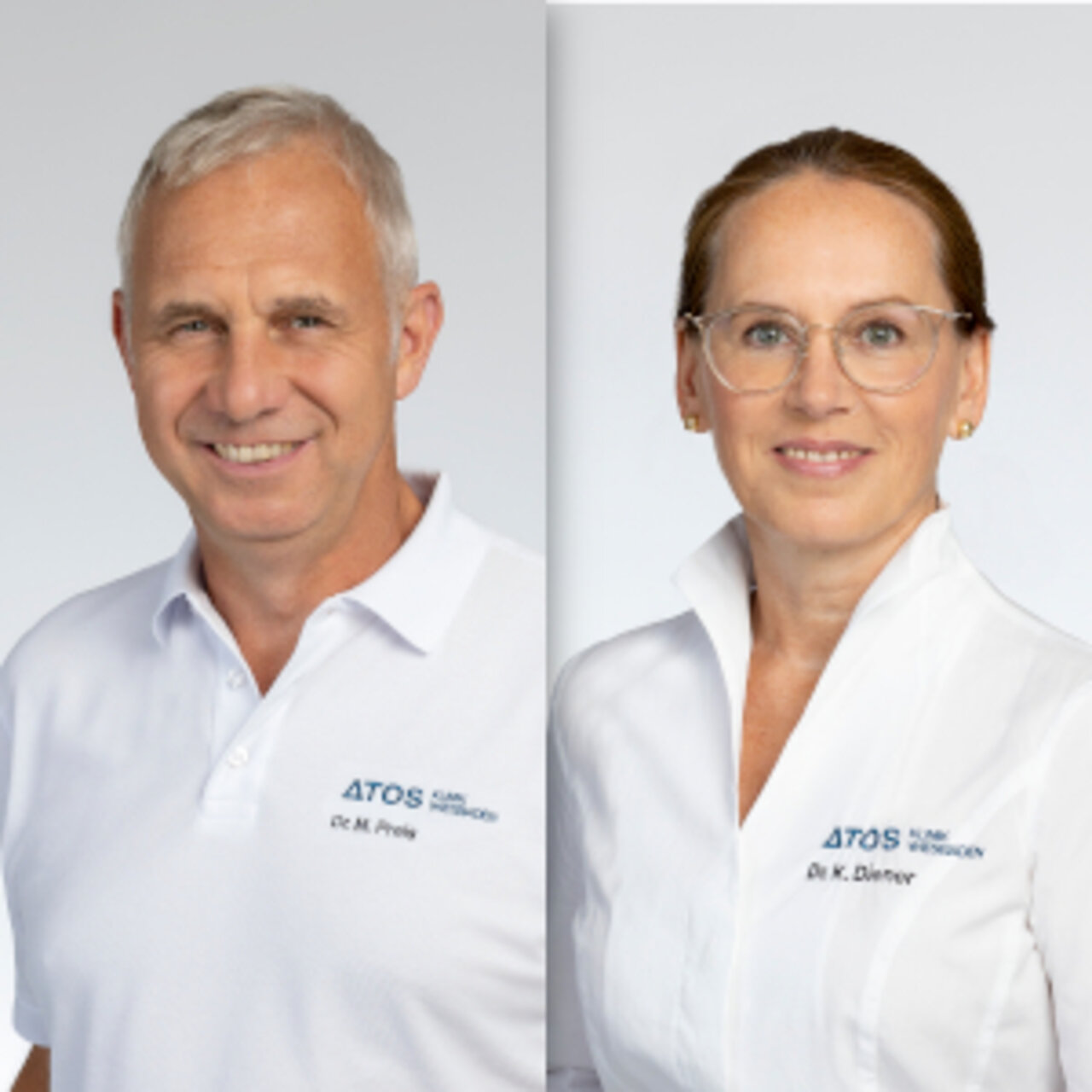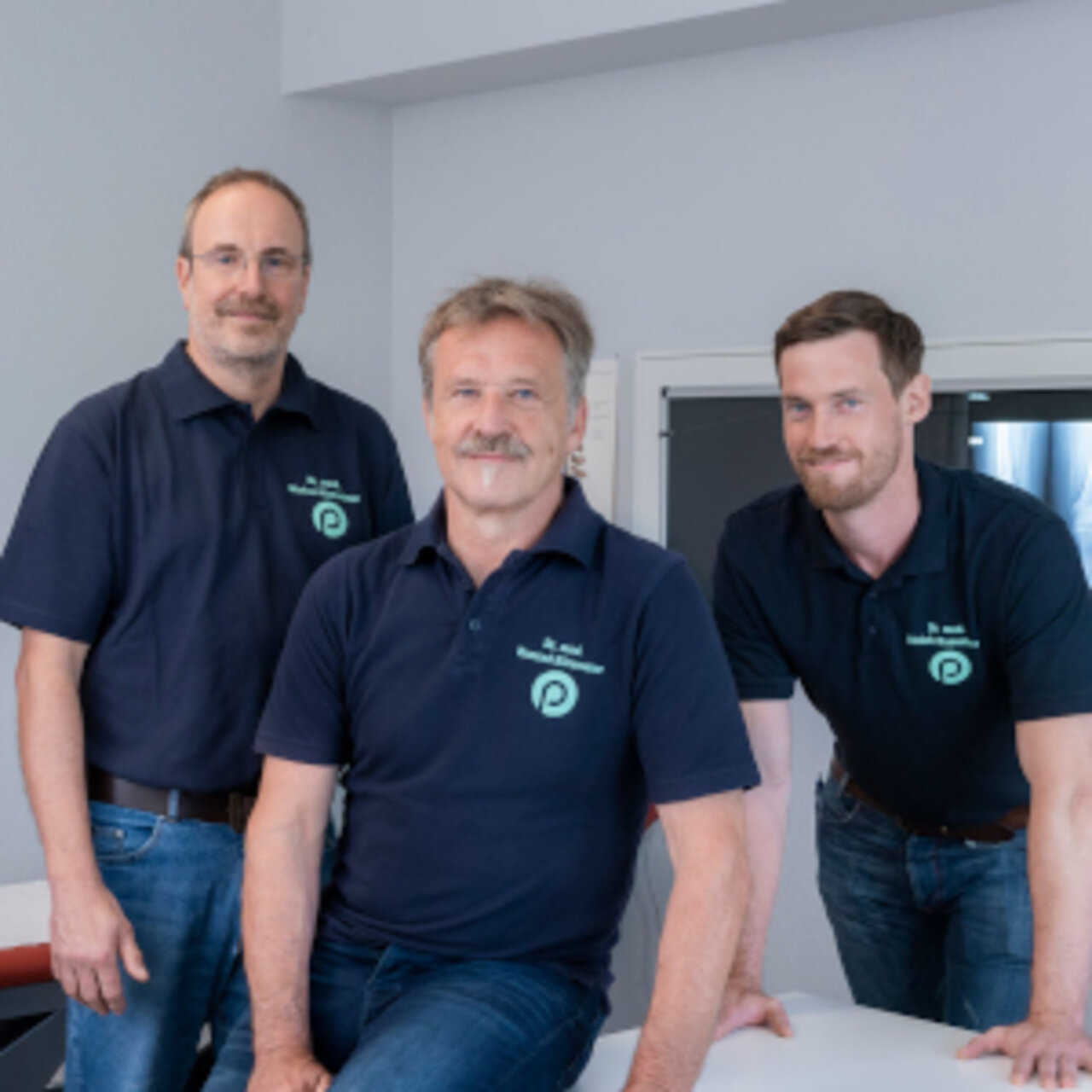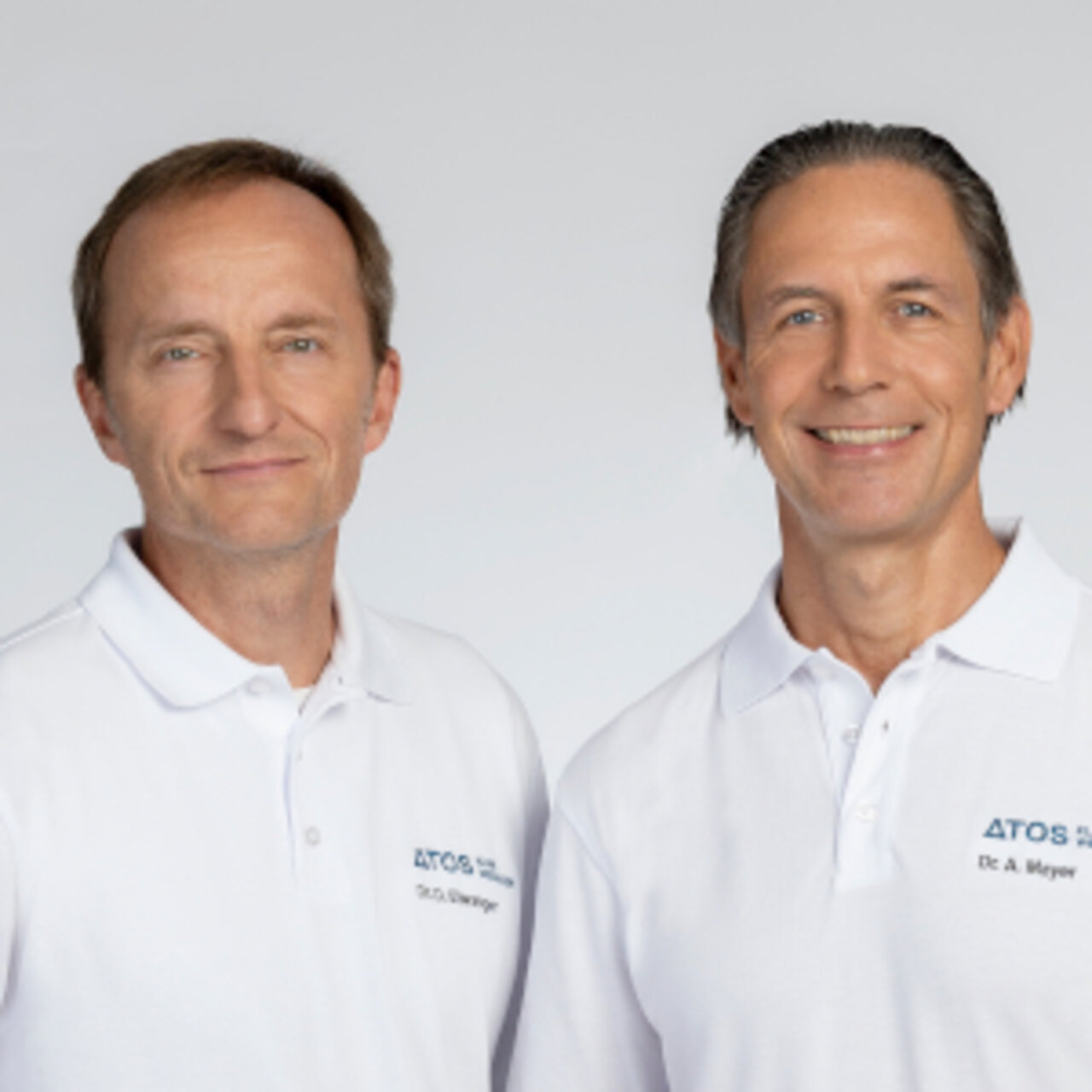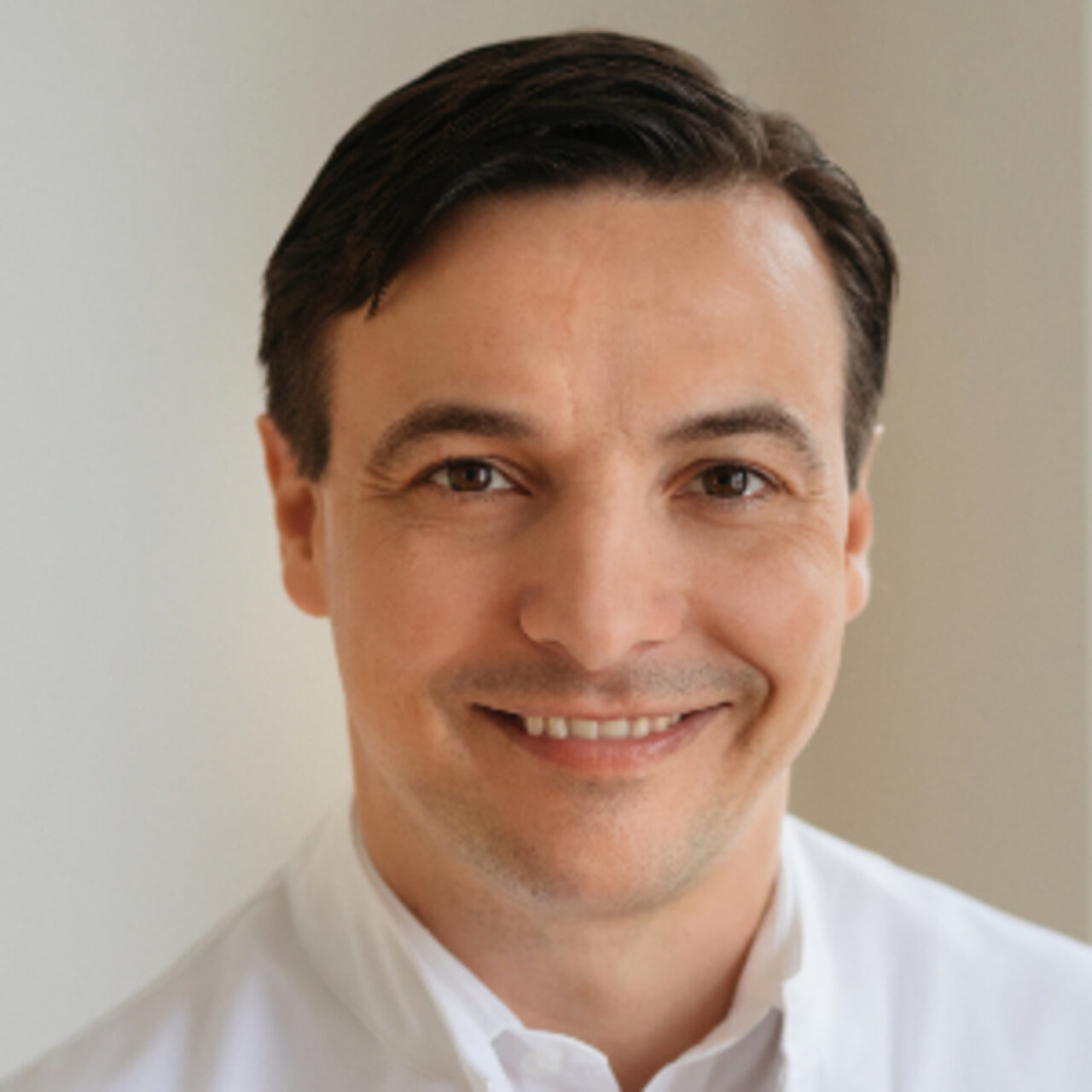Specialists in Knee replacement
15 Specialists found
Information About the Field of Knee replacement
What is a Knee Replacement Surgery?
A knee replacement is a knee prosthesis or an artificial knee joint replacing a complete natural knee or parts of it. In general, knee replacement surgery is only performed when the natural knee joint has a very high degree of damage or the joint restricts the patient in his freedom of movement due to pain. Normally, prostheses are only considered when all other conservative measures such as analgesics medications, cartilage-building substances or joint-sparing therapies are no longer effective.
A knee joint prosthesis is one of the most commonly practiced implantations today. In Germany, every year more than 150,000 knee surgeries are accomplished.
What Types of Knee Prostheses are There?
The purpose of a knee joint prosthesis is always to best imitate a natural joint in its shape, appearance and function. Doing this, doctors attempt to remove as little healthy bone material as possible. They limit the replacement to the worn-out parts, mill them out and replace them with a metal layer. Depending on how badly damaged a joint is, there are currently three common types of prostheses:
Unicondylar Sled Knee Prosthesis
The unicondylar sled prosthesis is the simplest and most common form of a knee prosthesis. Here, only one single condyle of the femur is equipped with a metal surface. This type of prosthesis can solely be used if all ligaments in the knee joint are intact and the injury is limited to the outer or inner condyle. This means only the articular cartilage is damaged. Many patients with bow legs have this type of lesion. Depending on which side needs to be replaced, this type of slide prosthesis is applied either externally or internally, whereas the opposite side of the knee joint is provided with a metal base or substructure containing a plastic block on which the artificial joint can slide around like a sled.
Bikondylar Sled Prosthesis
The bikondylar sled prosthesis is the most common knee endoprosthesis and completely replaces the knee joint. The joint surfaces of the thigh, shin and sometimes the kneecap are substituted. It is important that the stabilizing ligaments of the knee joint, such as outer and inner meniscus are still preserved and functional. Thus, this prosthesis can be implanted even if the anterior cruciate ligament is destroyed. The outer and inner bands then contribute significantly to the stability of the knee. If both anterior and posterior cruciate ligaments are no longer stable, a posterior-stabilized prosthesis may also be implanted: Under strain, it takes on the tasks of the cruciate ligament by shifting the thigh to the back and the tibia to the front.
Axis-guided Knee Prosthesise
If, in addition to bones and cartilage, the knee ligaments are badly damaged as well, a pedicled knee endoprosthesis must be used. This type of prosthesis is usually used like a revision prosthesis, if previously all other prosthetic measures have failed. The axis-guided knee prosthesis stabilizes the knee joint in its longitudinal axis. Lateral displacement of the lower leg bone to the femur bone is thereby prevented. The individual parts of the prosthesis then work together like a hinge joint, thus enabling stability. The disadvantage compared to uni- or bicondylar slide prostheses, however, is the significantly reduced life span of these prostheses types and the limitation of movement of the knee. Pedicled full prostheses are differentiated between two kinds:
- Rotation knee prosthesis: If the cruciate ligament and menisci are damaged but the muscular apparatus and joint capsules still function, this rotational prosthesis stabilizes the knee joint anteriorly and posteriorly as well as laterally and medially, with a possible external rotation of the ankle.
- Axis-guided knee prosthesis: If the ligaments, joint capsules and muscles are damaged, this prosthesis is implanted. It stabilizes the joint by minimizing the freedom of movement.
What Does a Prosthetic Knee Replacement Consist of and What are its Parts?
Due to the fact that a prosthetic knee replacement is a foreign material to the human body, certain requirements must be met by a prosthesis. Most importantly, the artificial knee joint has to function painlessly and trouble-free. The person must not be allergic to the material. In addition, the fabric must be resistant to corrosion and withstand the natural abrasion of the joints against each other. The most commonly used substances are therefore ceramics, special plastics (so-called polymers) or metal compounds (for example CoCr alloys). Patients with nickel allergies can also use titanium alloys. The plain bearing of the artificial joints consists predominantly of plastics, the polyethylenes.
Every knee prosthesis consists of three parts: thigh part, lower leg part and a plastic-based coating on shin part.
The thigh component usually consists of a metal compound and replaces the worn surfaces of the femur. The lower leg portion is made of titanium and replaces the worn portions of the tibia. This is then followed by the plastic-based slide bearing made of polyethylene, which artificially replaces the joint gap. Optionally, the posterior surface of the kneecap can be removed and replaced with a metal. However, this fourth component is rarely used.
How to Implant a Knee Replacement?
Every knee replacement or prosthesis must be anchored in human bone. Only then enough stability is provided. Depending on the degree of bone deterioration and its quality as well as physical activity, health and age of the patient, a physician can resort to three types of anchorages: cemented, cementless, or hybrid prostheses.
Cemented prosthesis: With this technique, the knee joint is anchored to human bone with bone cement. The cement consists of polymethylmethacrylate. This type of stabilization is the most commonly practiced one and is used when the patient’s bone quality is greatly reduced. The advantage here is that the knee joint becomes fully recovered quickly after surgery.
Cementless prosthesis: Here, the joint gets firmly clamped to the upper and lower leg bones and squeezed in. For this, the bone is sawn and adjusted to the prosthesis in order to attain a stable hold. It is assumed that the body's own bone and the firmly attached prosthesis sooner or later grow together. Stability is a result of this. For this process, the surface of the prosthesis is constructed quite rough, so that the implanted bone can anchor well. A prerequisite here is, of course, a good bone quality. Therefore, this type of implantation is limited to young patients only. With this procedure, the joint becomes fully resilient as well.
Hybrid prosthesis: As the name of this prosthesis suggests, it consists of cementless and cemented parts. Here, the lower leg portion is attached to the prosthesis with bone cement while the thigh portion remains cementless. With this variant, the joint can also be fully put weight on immediately after the operation.
How Does Knee Surgery Proceed and what Does Treatment Look Like?
An artificial knee joint can be implanted conventionally or minimally invasive. The type of implantation depends on each patients’ individual circumstances and possibilities. While general risks such as infections, wound healing disorders or thrombosis can occur, specific problems affecting the artificial joint can appear as well. In some cases, components or the entire joint must be replaced.
Customarily, the patient is hospitalized for two weeks, but is then admitted to a rehabilitation clinic or may be treated on an outpatient basis as part of a follow-up treatment. Also physiotherapeutic exercises and physiotherapy belong to the aftermath treatment of an artificial knee joint.
What Physicians and Clinics are Specialists for Knee Replacement Surgery in Germany, Switzerland, and Austria?
If a patient is in need of an artificial knee joint, he or she wants the best medical care. That's why the affected person wants to find out where to locate the best clinic for knee replacement. Since this question cannot be answered objectively and a reputable doctor would never claim to be the best, a patient can only rely on the physician’s experience. It can be assumed that the more knee replacement surgeries a surgeon has performed, the more experienced he has become in his specialty.
Thus specialists for knee replacement surgery are orthopedists who specialize in endoprosthetic care of the knee joint. Due to their knowledge and many years of experience as orthopedic surgeons with focus on knee surgery, they are the right contacts for performing a knee operation. PRIMO MEDICO helps you to find recognized specialists, clinics and centers for knee replacement surgery in Germany, Switzerland, and Austria.
Sources:
http://www.ae-germany.com/index.php?option=com_content&view=category&id=14&Itemid=153














